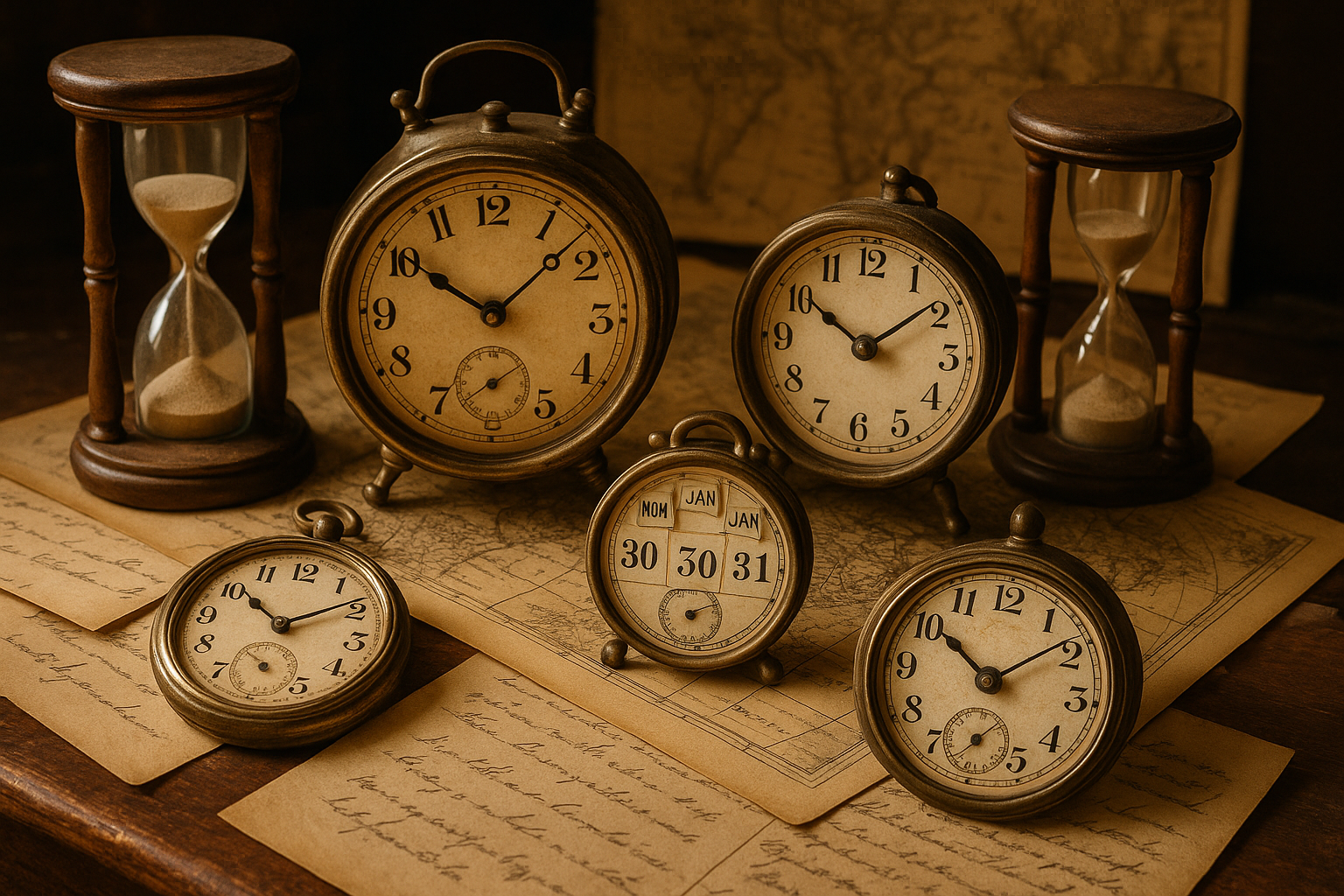
Across Centuries: How Calendar Systems Shaped Society and Our Everyday Timekeeping
From sun-baked stones to digital numbers, humans have grappled with tracking time for millennia. The story of calendars is a tale of invention, power, and cultural adaptation—one that influences how we compute the gaps between our days, events, and memories.
Related Tools:
The Dawn of Timekeeping: Humanity’s First Clocks
Long before the Gregorian calendar organized our year into neat months and weeks, ancient societies turned to the skies. Astronomers in Mesopotamia recorded lunar cycles in clay, while Egyptians marked rising waters of the Nile with solar-based calendars. Each civilization sought order: to know when crops would ripen, when to honor their gods, and how to align civil life.
The Babylonian calendar relied on the Moon. Months fluctuated according to celestial events—an intricate dance noticed by those eager to harness time. Across the oceans, the ancient Maya devised calendars stretching over millennia—tools not just for agriculture, but prophecy and mythology. Every society built its own framework.
The Roman Revolution and the Birth of January
Early Roman calendars, haphazard with their leap months and political meddling, made time itself a malleable thing. But in 46 B.C., Julius Caesar introduced the Julian calendar: a bold intervention, standardizing months and leap years based on solar cycles. For the first time, the West had a predictable means to measure time between dates—a notion crucial for contemporary schedules, contracts, and anniversaries.
From Papal Edict to Global Standard
The Julian system was not perfect. Over centuries, minuscule discrepancies in leap years caused holidays to drift—Easter was creeping away from the spring equinox. Enter Pope Gregory XIII in 1582. The Gregorian calendar—now the global default—trimmed days, recalibrated leap years, and realigned Easter. Adoption was not instant; Protestant and Orthodox countries hesitated for decades, leading to oddities like Britain skipping 11 days in 1752.
Calendars Across Cultures: Lunar, Solar, and Luni-Solar
But Western calendars are just one chapter. The Islamic world observes the Hijri calendar, strictly lunar and about 11 days shorter than the solar year—important for holidays like Ramadan and Hajj. Traditional China’s calendar knits lunar phases into a solar framework, making it both astrological and agricultural. Jewish communities maintain their own luni-solar reckoning, balancing festival dates through periodic leap months.
Some cultures, like the Balinese Pawukon, use unique cycles—210 days divided into overlapping weeks. The Ethiopian calendar, almost seven years behind Western reckoning, shapes everything from legal contracts to birthday celebrations.
Why Does It Matter How We Measure Time?
Tracking time isn’t just about order—it’s about meaning. Our systems echo societies’ priorities: harvests, worship, commerce. The gap between two dates can be a matter of legal importance, emotional significance, or practical planning. Businesses depend on precise time spans for payroll cycles; environmental science studies climate changes over centuries; even athletes count down training intervals.
Leisure, Law, and Life Event Calculations
When did the Ancient Olympics begin? How many days since your favorite band released their first album? Time between dates offers surprising insight into history and nostalgia. Courts and contracts recognize the number of days between obligations; scientists measure epochs and events across centuries.
Calculating Time Between Dates: Ancient Tools, Modern Needs
Earlier, figuring time gaps demanded astronomical knowledge or stacks of almanacs. Now, it’s effortless. With modern tools for calculating time between dates, designers, developers, project managers, and everyday users instantly access information that once required scholarly precision.
No longer bound to pen and parchment, today’s calculations empower you to answer questions ranging from "How many weeks until my deadline?" to "What’s the difference in years between eras or artifacts?"
Looking Forward: Calendars Beyond Earth
As humanity ventures into space, traditional Earth-bound calendars face new challenges. Martian days—sols—run 24 hours, 39 minutes, and missions require custom timekeeping. Future settlements may craft new systems, echoing ancient ancestors inventing time anew for new worlds.
Hidden Calendar Legacies in Language and Culture
Consider the names of months: "July" and "August," honoring Roman emperors. Or the phrase "Monday"—moon’s day, a relic of lunar time. Even today, our daily language is steeped in the echoes of how different people chose to measure and remember time.
Conclusion: Our Ever-Shifting Relationship With Time
Every time you check a calendar or use a calculator for days between anniversaries, you are engaging with a puzzling, creative, and profoundly human effort. The task—counting days between two dates—may seem mundane, but it’s built atop centuries of debates, discoveries, and the power to give rhythm to our lives.
So next time you compute the span between birthdays, contracts, or historical milestones, remember: you’re holding thousands of years of human ingenuity in your hands.
